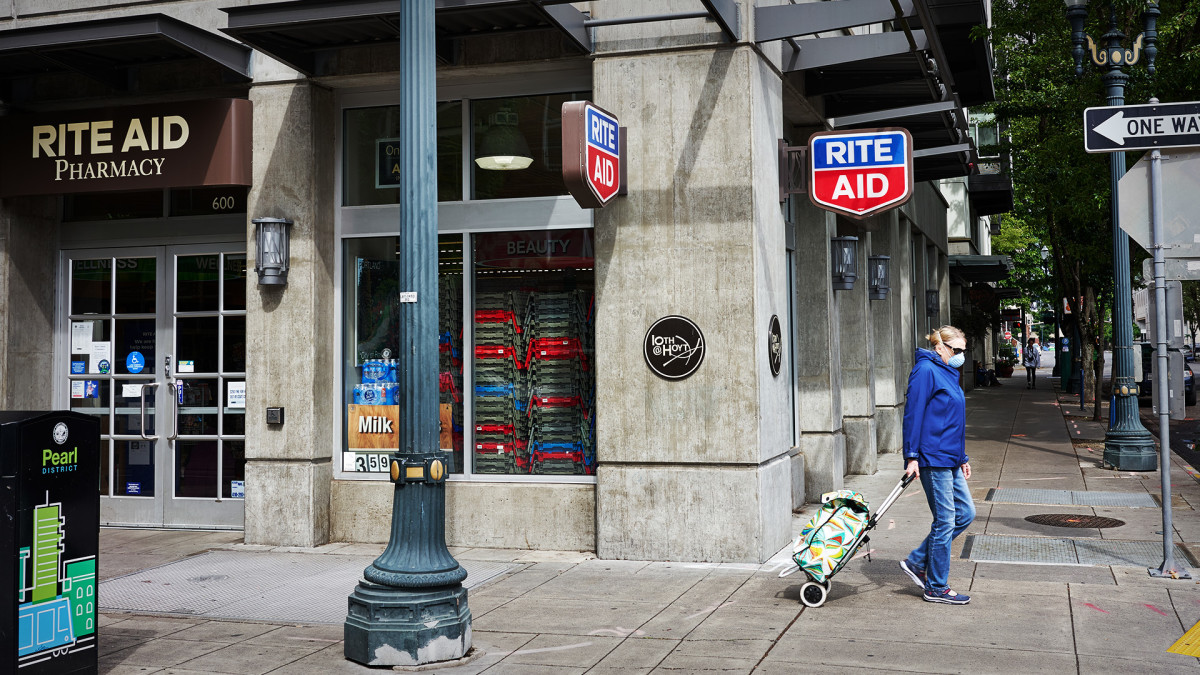
The retail market has rapidly changed. You can blame the internet and Amazon for that, but the reality is that good brick-and-mortar retailers have found ways to thrive.
Costco, for example, has thrived by remaining true to its physical-store-based model, doing only fairly limited online sales. TJX (TJX) -), Marshalls, T.J. Maxx, and HomeGoods have no online sales yet remain dominant retail brands.
DON'T MISS: Bankruptcy watch: Another beloved brand faces a cash crunch
While digital sales seem to have made traditional retailers an endangered species, the numbers tell a different story.
"On a not-adjusted basis, the estimate of U.S. retail e-commerce sales for the second quarter of 2023 totaled $269.5 billion, an increase of 6.6% from the first quarter of 2023," according to data from the U.S., Commerce Department.
The second-quarter 2023 e-commerce estimate increased 7.7% from the second quarter of 2022 while total retail sales increased 0.5% in the same period.
The key number — the one that makes clear that retail failures and bankruptcies can't be blamed simply on e-commerce — comes in the next line in the Commerce Department's quarterly retail report.
"E-commerce sales in the second quarter of 2023 accounted for 14.7% of total sales," the government agency reported.
So, yes, digital sales are a meaningful number, but they're not an excuse for why certain brick-and-mortar chains are failing.
And digital sales are certainly not responsible for the downfall of Rite Aid (RAD) -), a once-thriving retailer that is teetering on the edge of a Chapter 11 bankruptcy filing.

Image source: Shutterstock
Rite Aid likely to close stores
Rite Aid's biggest rival, CVS Health (CVS) -), has outlined plans to close about 300 stores in 2024. That move is happening, however, not because the company is struggling but rather to adjust its portfolio based on population shifts.
In many ways, CVS is doing what Starbucks does every few years when it closes stores that no longer make sense for the brand. In the post-covid era, that could simply mean that CVS has some locations near office buildings where workers no longer come in every day or stores in neighborhoods where some of the population has moved away.
Rite Aid, however, has been struggling and has more than $3.3 billion of debt. It's currently mulling a Chapter 11 filing and has been negotiating with its creditors ahead of a filing. The company could close as many as 500 stores across 17 states as part of its reorganization plan, according to a Wall Street Journal report.
Rite Aid faces a lot of problems
Population shifts may have hurt Rite Aid more than CVS. The struggling pharmacy chain has heavy exposure to cities, some of which have lost residents and others that have seen work patterns change as some companies remain remote while others operate on hybrid schedules.
Rite-Aid Chief Financial Officer Matt Schroeder did not comment on a potential bankruptcy filing but did address its debt during the chain's first-quarter-earnings call.
"We have always had an open dialogue with our lenders and are continuing to evaluate several options for addressing our 2025 debt maturities. We do not have a specific update to provide today on those discussions," he said.
Rite-Aid currently has about $1.15 billion in liquidity.
The company has a high risk of defaulting on some of its debt, according to RapidRatings.
“if current trends persist, it would be logical to expect that Rite Aid Corp. will face serious default risk this coming year,” the analysis said, RetailDive reported.
Rite Aid has been steadfast in saying that it's actively addressing its long-term options and that no decisions have been made.
Get exclusive access to portfolio managers and their proven investing strategies with Real Money Pro. Get started now.







